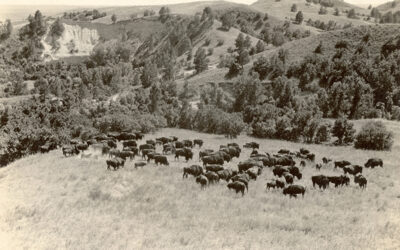The spreading popularity of ragtime music during the early 1900s led to a series of so-called animal dance fads, including the fox trot, horse trot, turkey trot, crab step, lame duck, snake, grizzly bear, bunny hug, and others. Religious leaders and the general press attacked the new dances as immoral or at the least, unseemly. The Omaha Daily News on February 3, 1913, criticized the excesses of a recent Omaha “‘rag’ exhibition” featuring the bear or bearcat dance:
“Girls in short dresses, some with hair down their backs in braids or curls and several looking to be not over 16, did the ‘bear cat’ dance and all its accessories last night at the Armory hall, Twentieth and Harney streets. Sometimes they were dancing with young boys from 16 to 19, and sometimes with older boys and men. It depended on the size of the boy or man.
“Old and young were on the floor together, of both boys and girls. Some of the girls were painted and wore dresses shorter than their age justified. The odor of liquor and tobacco smoke was on the breath of many of the boys and men. A few of the men there appeared to have had too much liquor.
“A policeman was on the floor most of the time, and there were two men with badges on to indicate they were floor managers. If a man fell down, the floor managers and the policeman laughed with the rest of the crowd. When a couple staged the ‘bear cat’ unusually strong, a floor manager and a policeman were heard to laugh and say, ‘They’ve got it bad.’
“In doing the ‘bear’ at the armory, some of the couples, particularly the younger ones, put both arms around each other and walked for several minutes at a time, twisting their bodies to keep time with the music.
“Boys using profane language while with the girls was a common occurrence last night. Those whose breaths were the strongest with liquor were the most liberal with their profanity. In the men’s toilet room there were many empty whisky bottles. One girl used such profane language that it shocked a policeman. He suggested to her that she not talk so loud. Some of the little girls were at the dance without escorts and some were accompanied by boys. Some went away without escorts, but more with them. No introduction was necessary to get partners.
“The dances in the Armory hall are given ‘every Sunday,’ according to a sign in one end of the hall by ‘The Star Dancing club.’ Girls go free; men and boys pay 25 cents.”



